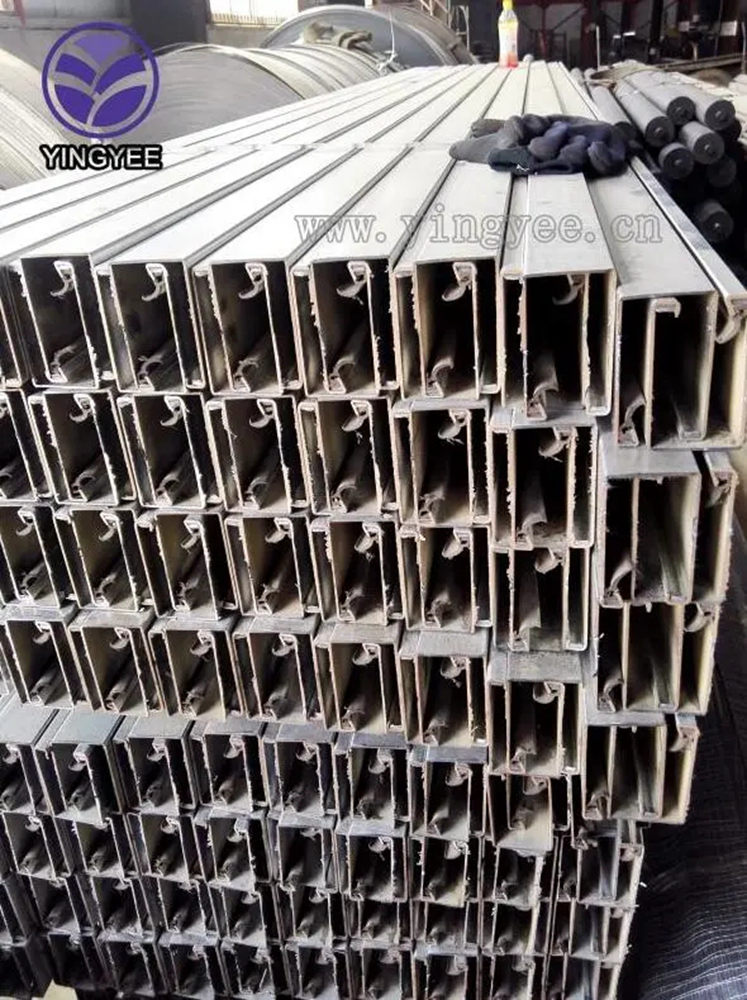
Advancements in Metal Ceiling Systems The Role of Roll Forming Machines
The construction industry has seen significant advancements in the tools and materials used for creating durable and efficient structures. Among these advancements, metal ceiling systems have gained popularity for their strength, aesthetic appeal, and sustainability. Central to the production of these systems are roll forming machines, which streamline the manufacturing process of essential components such as ceiling studs, tracks, drywall, C-channels, main channels, and wall angles.
Roll forming machines are sophisticated pieces of equipment designed to create continuous profiles from metal sheets. These machines work by feeding flat metal into a series of rollers that progressively shape it into desired configurations. This process is particularly beneficial for producing metal ceiling systems as it allows for high-volume production with precision and efficiency.
Components of Metal Ceiling Systems
Metal ceiling systems typically involve several structural elements that work together to provide stability and support. Key components include
1. Ceiling Studs and Tracks These are the foundational parts of a suspended ceiling. Ceiling studs serve as vertical supports, while tracks hold them in place, ensuring the ceiling is securely fastened to the building's framework. The use of robust metal for these components enhances their durability and allows for greater load-bearing capacities.
2. Drywall Often used in conjunction with metal framing, drywall adds an aesthetic finish to the ceiling while providing sound insulation. The combination of drywall with metal tracks contributes to a lightweight yet strong ceiling solution.
3. C-Channels and Main Channels C-channels are designed to interface with other structural elements, distributing loads evenly across the ceiling system. Main channels run perpendicular to tracks and support cross tees, further enhancing the ceiling’s structural integrity.

4. Wall Angles These are critical for transitioning between walls and ceilings. Wall angles provide a finished look while also accommodating expansion and contraction due to temperature changes in the building.
Role of Roll Forming Machines
The production of these components is greatly enhanced by roll forming machines. Automated roll forming systems allow manufacturers to produce large quantities of metal profiles quickly and accurately. The ability to customize the profiles according to specific project requirements makes roll forming machines invaluable in the construction industry.
Moreover, the use of advanced technology in these machines means that they can achieve tighter tolerances and more complex shapes than traditional manufacturing methods. This adaptability not only reduces waste but also minimizes labor costs associated with reworking defective parts.
Advantages of Metal Ceiling Systems
The adoption of metal ceiling systems offers several advantages. Firstly, they are fire-resistant and can improve safety standards in buildings. Additionally, their longevity means lower maintenance costs over time. From an aesthetic perspective, metal ceilings can be designed in various finishes and colors, contributing to modern architectural trends.
Conclusion
In conclusion, the synergy between roll forming machines and metal ceiling systems represents a significant innovation in the construction industry. By enhancing the efficiency and precision of manufacturing, these machines play a crucial role in the continued development of robust and visually appealing metal ceiling solutions. As the industry evolves, the importance of such technology will only continue to grow, paving the way for more sustainable and efficient construction practices.